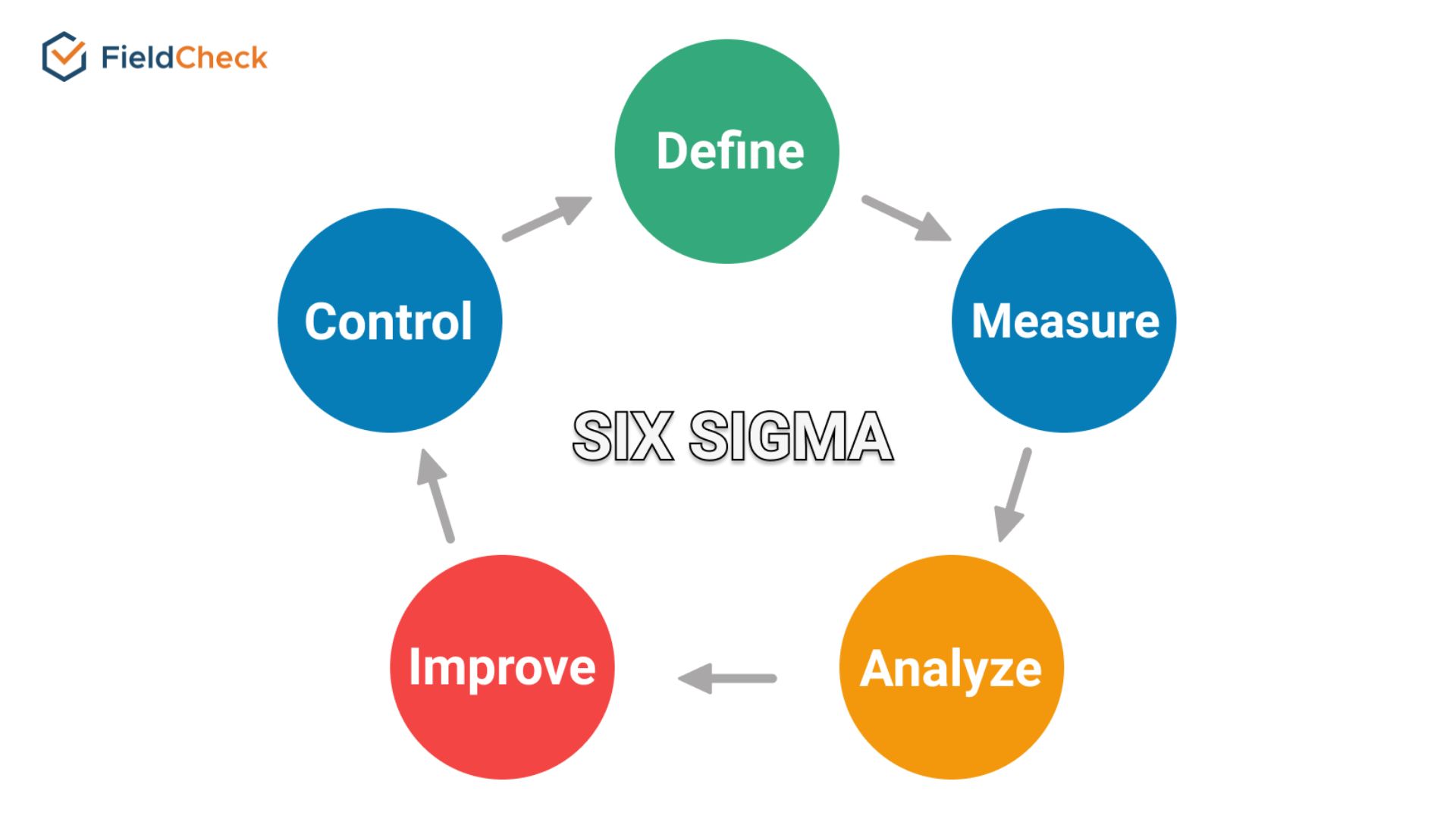What is 6 Sigma? How Amazon Improves To Stand On Top
What is 6 Sigma? This one is familiar to those who have never been exposed to the concept. In short, 6 Sigma is a set of methods that help businesses make improvements and changes more accurately.
The question is, how does this model work so effectively? Explore your answers in the following content.

Six Sigma - Business improvement method
What Is 6 Sigma?
What is 6 Sigma? This is considered a method to help improve quality management processes and business processes by relying on statistics to find errors, identify causes, and handle mistakes to increase the accuracy of the process.
However, Six Sigma is not a quality management system like ISO 9001. Instead, it provides a new mindset for businesses. Accordingly, instead of businesses focusing on solving defective products, the superior method is to invest in the process to improve and prevent possible errors.
This method will easily make it stable and perfect for business operations and production processes. The Six Sigma methodology applies statistical measures to count the number of errors arising in the process.
Then, businesses can rely on that to find solutions to overcome and resolve it as if there were no errors. According to the standard of the Six Sigma model, a process should have no more than 3-4 defects per 1 million products.

Six Sigma relies on statistics to find and fix errors
Sigma Levels
The 6 Sigma process can reach 99.99966% of perfection. This is considered the 6th level of Sigma with standard deviation, representing the maturity level of the process.
Lean Six Sigma
Lean is the above production method invented by the Toyota brand to eliminate waste and irrationality in the production process. Accordingly, the form can direct organizational activities as lean as possible.
What is lean six sigma? Lean 6 Sigma combines Lean and Six Sigma methodologies. While Lean helps reduce waste and production costs, Six sigma helps to support process accuracy.

Lean Six Sigma
6 Unexpected Benefits That Six Sigma Brings To Businesses
Six Sigma helps save operating costs for businesses. For example, in 1985, the once famous brand Motorola was an enterprise that held about 17 billion USD using Six Sigma.
In addition, this methodology also helped General Electric save $12 billion between 1995 and 2000. According to an ASQ study, more than 50% of Fortune 500 names used Six Sigma and saved more than $400 billion.
"There is no industry that cannot benefit from Six Sigma, as long as it follows a defined process,” Jennifer William shares.
Here are six key benefits that the Six Sigma methodology brings to businesses:
#1. Increase Customer Loyalty
The Six Sigma methodology focuses on customer requirements when problems are found in operational activities. Therefore, it is highly customer oriented.
Your product not only needs to be error-free, but it also has to meet the expectations of its users to maintain customer loyalty.
To be able to do that, businesses should build and conduct surveys about customers and their behavior to understand customer psychology and requirements.

Six Sigma helps increase customer loyalty
#2. Improve Corporate Culture
Once a problem is identified, a business can significantly reduce the incidence of the issues and prevent them from occurring again.
Thanks to that, you can cut unnecessary costs and optimize budget usage for your business. When sales increase and costs decrease, the business's profit also increases.
#3. Reduce Costs And Increase Profits For Businesses
One of the ways to improve employee-business engagement is through perfect work processes. For Six Sigma, people are as important as engineering.
In addition, this method system also helps to solve problems arising in the business process. This is due to a clear, transparent measurement method and a proactive working attitude. As a result, managers can better orient their employees no matter what type of business they are in.

Reduce costs and increase profits
#4. Better Expectations
Aiming at a rate of 3-4 errors/million helps businesses set higher expectations. Accordingly, the company may be able to achieve higher achievements.
In addition, the 6 Sigma methodology system also helps businesses to detect and solve existing problems. As a result, management can make appropriate decisions to remove these bottlenecks.
#5. Strategic Planning
The methodological system holds an important position in the entire strategic vision of the enterprise. Accordingly, when a business fulfills its mission, in addition to the goals and SWOT analysis, the methodology helps them focus on the areas that need to be improved.
For example, if the business implements a cost optimization strategy, the methodology can help to resolve the suboptimal implementation steps to reach the most reasonable agreement.
#6. Business Expansion
When the business solves the backlog problems and establishes a standard process of the 6 Sigma methodology, you will be able to scale the company and the accompanying measurement criteria.

Increase business scalability
Principles Of The Six Sigma System
#1. Data Enhancement
Businesses need to consider two questions before deciding:
- How to apply the Six Sigma methodology effectively?
- Essential Facts/data
Information about using Six Sigma should not be based on vague judgment but must have measurement accuracy.
#2. Focus On Customers
Like other business philosophies, the Six Sigma methodology is also customer-oriented. Improvements and modifications in the process to the standard should be determined according to the needs and requirements of the customer.
#3. Barrier-Free Cooperation
To own the optimal process, businesses need to apply Six Sigma according to the principle of barrier-free cooperation between many departments in the company from horizontal, vertical, or diagonal.
#4. Proactive Governance
Six Sigma mainly focuses on finding and solving problems in the process, helping to increase the accuracy of the process and, at the same time, preventing and solving problems that cause defective products.
#5. Focus On Perfection But Accept Some Certain Problems
The Six Sigma methodology sets a standard of 3-4 errors/million possibilities. So you don't have to rush to achieve 100% perfection. Innovative solutions can have problems and failures but stay within limits, and you can still learn from them.

Six Sigma has principles that businesses need to understand when applying
Obstacles When Deploying Six Sigma
With the benefits of increasing profits and satisfying customers, the Six Sigma is one of the tools that many businesses and organizations are interested in.
However, the application of Six Sigma still has some obstacles for first-timers, and even businesses that have used it may still have difficulties with this method.
Lack of Knowledge About The Method
Many companies that do not fully understand the Six Sigma method have embarked on implementation with the desire to keep up with the competition or impress the company's partners.
The lack of understanding of the principles will very easily lead to failed applications or wasting the enterprise's resources without bringing about the expected results.

The lack of knowledge about 6 Sigma makes the application ineffective
Difficult To Arrange Staff For Conducting Project
Assigning personnel and areas to implement Six Sigma is one of the first issues the leadership must discuss before coming to a final decision. This stage requires the consensus of decision-makers and leaders.
For a Six Sigma project to be successful, the people in charge must be willing to spend time, talent, and money on it.
Moreover, having to set up personnel means businesses have to make temporary organizational structure changes, even major personnel changes.
Limited Ability
The outcome of a Six Sigma project depends heavily on the leadership and control of the leader. If the management is poor, the improvement process is unsuitable for the business. Or the project does not meet its strategic goals.
Another reason is that improvement projects are focused on outcomes rather than root-cause solutions.
It’s your time to review the above factors and adjust accordingly.

The results of a Six Sigma project depend a lot on the leadership and control of the leader
DMAIC Process To Apply Effective Six Sigma Methodology
When implementing a specific project or goal according to the Six Sigma methodology, you only need to follow the 5-stage process in DMAIC as follows:
Step 1: Define
Assessing customer and product quality requirements is the first and most important step in every Six Sigma implementation.
At this stage, the project team needs to clearly define the project to align with the business goals and meet the client's needs. After completing a good self-assessment, you'll also need to establish the project's scope and objectives.
More specifically, you need to answer questions like "What are the problems in the production process?" and "Which business area needs to implement Six Sigma?"
Step 2: Measure
Next, you must collect the necessary data about the factors affecting the process. Measurements must be accurate to assess the performance of the system properly.
This step also helps you identify problems that arise so you can find the cause of the errors.
Step 3: Analyze
After collecting all the data for evaluation, it is time to analyze the ability to achieve the goals with the planned plan and the implementation results.
The goal is to find the relationship between the root cause and the factors that cause process fluctuations when the goal is not achieved, from which to come up with contingency plans for each plan.
Step 4: Improve
The next step after finding the cause of the problem is finding ways to improve the process. Businesses need to find and identify possible actions before starting to implement an improved solution.
The organizer can apply many simple and complex tools to eliminate redundancies and save time for more improvement.
Step 5: Control
Last but not least, you need regular monitoring and checking to finalize the action plan with the necessary changes. What needs to be done is to plan the monitoring to control the target seriously and effectively.

DMAIC process
Case Studies - Successful Application of Six Sigma
Since 1986, Six Sigma has been adopted by many companies worldwide and has become the "brand" in corporate development.
After Motorola successfully developed these principles and General Electric made significant changes by applying them, many other companies are also trying to apply Six Sigma in the hope of better results in their businesses.
Two of them, the retailer Amazon and the pharmaceutical company Catalent Pharma Solutions, have succeeded in increasing the efficiency of their product improvement processes by putting Six Sigma into practice.
For domestic enterprises, there are still not many typical examples of 6 Sigma application cases in Vietnam that stand out.
Amazon
Amazon.com, which started as an online bookstore, made many people suspicious and thought it was crazy with the idea of selling more than a million titles online. However, not long after, Jeff Bezos, CEO of Amazon, turned his online store from a place that only sold books into one of the largest online retailers in the world.
So what is the secret to this e-commerce giant's success?
One of the unique characteristics of Amazon is that every process, every customer experience, and every feature has an improvement plan and roadmap. And the answer lies in Six Sigma.

Amazon is a prime example of successful adoption of Six Sigma
Amazon is a prime example of Six Sigma and a source of learning inspiration for any business looking to improve its company. This approach was ingrained in Amazon's culture and was an indispensable tool for developing the products that would later become the global retail empire.
Specifically, Amazon has applied this method to eliminate defects and cut costs in the business process. Not only in the field of goods production, but this famous retailer has also implemented Six Sigma into its business strategy.
Since 1999, Amazon has set the standard for excellence in the way it does things. That excellence is reflected in efforts to improve the customer experience and drive productivity to increase profits.
With the virtual Amazon system, a Lean tool, Amazon has empowered employees to resolve defects immediately and effectively, helping to reduce future customer complaints.
The Amazon company's rule is to hire only the best people and have these employees take an advanced Lean Six Sigma training course.
Amazon seeks additional support from other tools, such as DMAIC, the Root Cause Analysis Tool,... to fully eliminate unhelpful steps to apply the Six Sigma method.
Catalent Pharma Solutions
As a leader in providing solutions to the pharmaceutical, biological, and health products industries for consumers, Catalent Pharma Solutions faces many errors when manufacturing millions of pharmaceutical units. The processing process, therefore, requires more time to analyze the item samples.
Furthermore, the company also needed a new system to forecast fluctuations in their proprietary product improvement process, Zydis.
The project team established a database to collect information and completed a control chart to update information. Programming languages for automation technology must be flexible and reusable.
After two weeks of making changes to the Six Sigma application, the company's performance improved, and Catalent Pharma prevented the loss of two batches of product worth £50,000.

The application of Six Sigma has significantly improved the performance of Catalent Pharma Solutions
Conclusion
Hopefully, with the above useful information, readers have grasped the concept and benefits of Six Sigma. You have also learned how to properly apply DMAIC principles and processes to successfully improve your products and services development process.
RELATED POST:
What Is PDCA? Today's Most Popular Continuous Improvement Cycle




